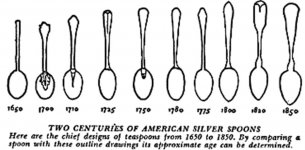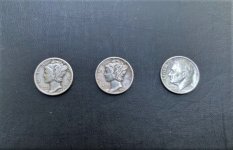DownEast_Detecting
Sr. Member
- Feb 26, 2020
- 428
- 1,101
- Detector(s) used
- Garrett AT Pro, Minelab CTX 3030
- Primary Interest:
- All Treasure Hunting
These finds are from one of the old foundation sites on my property. It’s the same site I found this locket at http://www.treasurenet.com/forums/w...p-dating-find-dug-my-new-site-last-night.html
So I found this spoon head and then this tiny peace of metal close by.
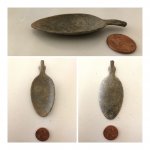
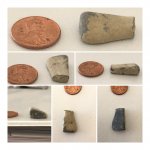
At first i thought the little piece might be the very end of the spoon handle. But I don’t think they are even the same metal.
Little piece had a white type of corrosion on it. I cleaned one side of it off. White patina is typically what? Tin/zinc? Obviously identifying the little piece is going to be hard/impossible. So more info on the spoon head is what I’m really hoping for. Like what kind of metal is it made from? Obviously if there are any marks on it, it’s on the piece I don’t have. But if the spoon was made of iron it would be rusted to almost nothing.
When I dug up this spoon at different house site. With all the pitting and rust on it. I assumed it was plated silver and not solid from the way it looked.
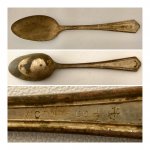
So if my spoon head isn’t silver, silver plated or iron. What is it? How old? Can anyone help with dating or suggestions for metal type. Thanks all.
So I found this spoon head and then this tiny peace of metal close by.


At first i thought the little piece might be the very end of the spoon handle. But I don’t think they are even the same metal.
Little piece had a white type of corrosion on it. I cleaned one side of it off. White patina is typically what? Tin/zinc? Obviously identifying the little piece is going to be hard/impossible. So more info on the spoon head is what I’m really hoping for. Like what kind of metal is it made from? Obviously if there are any marks on it, it’s on the piece I don’t have. But if the spoon was made of iron it would be rusted to almost nothing.
When I dug up this spoon at different house site. With all the pitting and rust on it. I assumed it was plated silver and not solid from the way it looked.

So if my spoon head isn’t silver, silver plated or iron. What is it? How old? Can anyone help with dating or suggestions for metal type. Thanks all.


